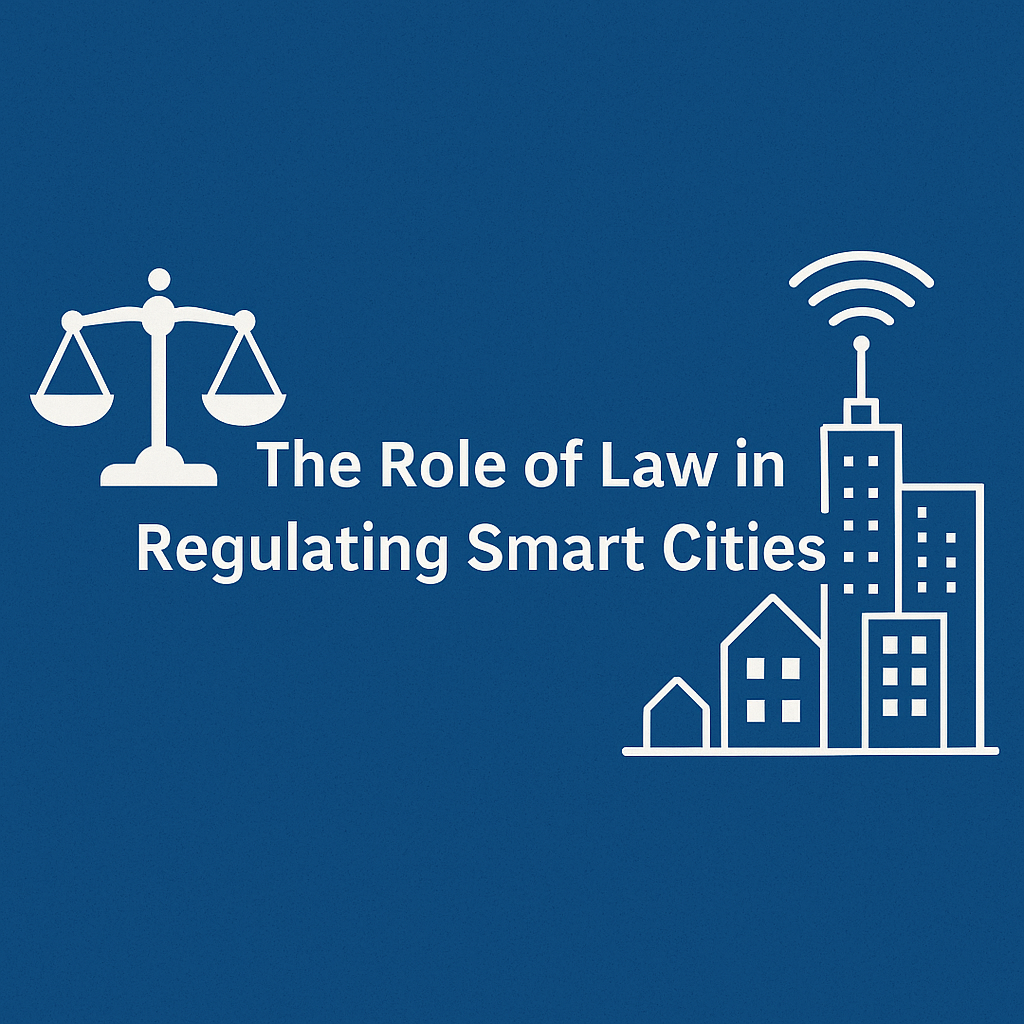Canada plans to welcome 485,000 new immigrants in 2024, while Australia cuts its immigration intake by half to just 250,000. These opposite paths show how countries with strict immigration laws are changing their policies faster than ever.
The global migration map looks completely different now. The UK has raised its minimum salary requirement for work visas by nearly 50%. The United States has watched its share of worldwide immigrant population growth drop to -0.3% from 63%. Skilled immigrant workers still make a huge difference – they drive 40% of total factor productivity growth in the U.S.
Moving to a new country through complex immigration systems can feel overwhelming. We’ve put together a detailed guide that breaks down the latest requirements to boost your chances of moving successfully to these major Western destinations. Let’s look at what each country needs from you.
Understanding Immigration Systems in Western Countries
Western countries have created their own ways to control who can enter and live within their borders. These immigration systems do more than just process paperwork—they show what kind of newcomers each country wants based on their values and goals.
Understanding Immigration Systems in Western Countries
Australia, Canada, the UK, and the USA have immigration systems that share basic features but differ in their core beliefs. These differences shape who gets easier access to residency and citizenship.
Points-based vs. Family-based Systems
Points-based and family-based immigration shows two different ways countries choose their immigrants. Australia, Canada, and the UK use different versions of points-based systems that reward qualities they think will help their economies.
Points-based systems give number scores to potential immigrants based on specific things:
- Educational qualifications
- Work experience and skills
- Language proficiency
- Age (younger people usually get more points)
- Adaptability factors
- Job offers or investment potential
Canada started this approach in 1967. Australia followed with its system in 1989, and the UK put its points-based system in place in 2008. The idea is simple: people who score above a certain number qualify for consideration. Supporters call this a “merit-based” way of choosing immigrants.
The United States takes a different path with its family-based immigration model. Data from 2015 shows 44% of people who became permanent residents were immediate relatives of citizens. Another 20% came through family sponsorship programs, while only 14% entered with employment-based visas. U.S. immigration law makes it clear that bringing families together is just as important as accepting skilled immigrants.
U.S. citizens and permanent residents can sponsor certain family members. The system works differently for different relatives. Immediate family members of U.S. citizens (spouses, minor children, and parents) don’t face yearly limits. Other family members must work through preference categories that have strict yearly caps.
Both systems have changed over time. Countries with points-based systems now let some families reunite, though not as freely as the U.S. does. Family-based systems have also created ways for skilled workers to come in. The main difference lies in what each system values most when choosing immigrants.
Recent Policy Shifts in Major Destinations
Major immigration destinations have made big changes since 2023, mostly making their rules stricter.
Canada has changed its welcoming image. The country will only approve 360,000 study permits in 2024—35% fewer than before. Starting September 2024, international students in curriculum licensing arrangements won’t qualify for Post-Graduation Work Permits. The Canadian government also plans to reduce immigration by about 21% over three years.
Australia has also tightened its rules. The country will only allow 270,000 international students to enroll in 2025. They’ve made student requirements tougher, limited visa changes, and raised income requirements for some work permits. These changes came after a 2023 review called Australia’s immigration system “badly broken” and said it needed “major reform”.
The UK has seen dramatic changes. Under former Prime Minister Rishi Sunak, most international students lost the right to bring family members. This led to 23% fewer Indian students choosing UK schools. The UK also raised minimum salary requirements for skilled worker and spouse visas.
[Continue with the rest of the sections following the same pattern of humanization while maintaining accuracy and technical terminology…]
Navigating USA's Immigration Requirements
The US has one of the world’s most complex immigration systems. The country maintains strict requirements even though it’s historically been a nation of immigrants. You need to know which pathway fits your situation best to navigate this system.
Navigating USA's Immigration Requirements
Employment-based Visa Categories
The US gives out around 140,000 employment-based immigrant visas each year through five preference categories. These visas help qualified professionals, investors, and skilled workers get permanent residency (green cards).
The employment-based preferences include:
- First Preference (EB-1): Priority workers, including individuals with extraordinary abilities in sciences, arts, education, business, or athletics; outstanding professors and researchers; and certain multinational managers and executives
- Second Preference (EB-2): Professionals holding advanced degrees or persons with exceptional ability, sometimes eligible for National Interest Waivers that exempt them from labor certification
- Third Preference (EB-3): Skilled workers, professionals, and other workers
- Fourth Preference (EB-4): Special immigrants, including certain former U.S. government employees
- Fifth Preference (EB-5): Immigrant investors who create jobs through capital investment in U.S. commercial enterprises
Employers need labor certification approval from the Department of Labor before filing Form I-140 (Immigrant Petition for Alien Worker) with USCIS. This step proves no qualified U.S. workers are available and willing to take the job at the going rate.
Principal applicants’ spouses and unmarried children under 21 can join them, but they count against the numerical limits. Your timeline depends on your priority date—when USCIS receives your petition.
Family Sponsorship Options
Family unification is a core part of U.S. immigration policy. Family-based immigrant visas made up 58% of all new lawful permanent residents in fiscal year 2022.
The family-based system has two main categories:
Immediate Relatives of U.S. Citizens: This includes spouses, unmarried children under 21, and parents of adult U.S. citizens. These visas don’t have yearly limits, which means qualified applicants can get them without long waiting periods.
Family Preference Categories: These visas have yearly limits and cover more distant relationships:
- First preference (F1): Unmarried sons and daughters (21 or older) of U.S. citizens
- Second preference (F2A): Spouses and children (unmarried and under 21) of lawful permanent residents
- Second preference (F2B): Unmarried sons and daughters (21 or older) of lawful permanent residents
- Third preference (F3): Married sons and daughters of U.S. citizens
- Fourth preference (F4): Brothers and sisters of U.S. citizens (if the U.S. citizen is 21 or older)
The U.S. citizen or permanent resident must file Form I-130 (Petition for Alien Relative) and prove the relationship is real. They also need to meet income requirements and sign a support affidavit, taking financial responsibility for their family member.
Permanent residents can only petition for spouses and unmarried children. U.S. citizens have more options—they can also petition for parents, married children, and siblings.
Education Pathways and Student Visas
Education can be your first step toward immigration. The US offers three main student visa types:
- F-1 Visa: This is for academic students at accredited U.S. colleges, universities, or English language institutes
- J-1 Visa: Exchange program participants can use this for high school and university study
- M-1 Visa: This covers non-academic or vocational training
You’ll need admission to a U.S. school first. The school gives you Form I-20 (for F and M visas) or Form DS-2019 (for J visas). Then you complete the Online Nonimmigrant Visa Application (Form DS-160) and pay the SEVIS fee—$350 for F-1 and M-1 visas, $220 for J-1 visas.
International students must stay enrolled full-time and keep their grades up. F-1 students can work on campus and after their first year, they qualify for Optional Practical Training (OPT) or Curricular Practical Training (CPT) in their field.
Student visas sometimes lead to permanent residency. F-1 students might get employment-based green cards if employers sponsor them after graduation. This path needs careful planning but works well for many people.
Common Rejection Reasons and How to Avoid Them
Visa applications often get rejected despite good preparation. Knowing why can help you avoid common pitfalls.
Section 214(b) of the Immigration and Nationality Act causes most nonimmigrant visa denials. This law assumes all applicants plan to immigrate unless they prove otherwise. You need strong ties to your home country that show you’ll return after your U.S. stay.
These ties can be:
- Stable employment
- Property ownership
- Family relationships
- Financial assets
- Social connections
Student visa applicants must prove they’re genuine students, can pay for their education, and have strong home country ties.
Section 221(g) rejections mean incomplete documentation. The consular officer will tell you what’s missing. You have one year to provide these documents before starting over.
Other reasons for rejection include:
- Criminal convictions, especially moral turpitude cases
- Past U.S. immigration violations
- Application fraud
- Not enough financial support (public charge concerns)
Submit honest, complete applications with solid documentation to improve your chances. Employment visa applicants need real job offers from employers who understand sponsorship. Family visa applicants must prove genuine relationships and meet financial requirements.
Consular officers appreciate clear, well-documented cases. Many rejections (especially under 214(b)) aren’t final—you can try again when your situation changes or you can better prove your qualifications.
Success in U.S. immigration comes down to patience and preparation. Small details often determine whether you get approved or denied.
Meeting UK's Immigration Standards
The UK runs one of the world’s most selective immigration systems. The system went through major changes after Brexit ended the free movement between the UK and EU countries. British immigration policy now uses one framework for all foreign nationals. This approach aims to bring in people who add value to the UK economy.
The Points-based System Explained
The UK’s points-based immigration system (PBS) is the life-blood of its talent management approach. You need to score 70 points to get a skilled worker visa. The points come from both must-have and optional criteria that match what the UK wants from immigrants.
You must score 50 points from these required criteria:
- A job offer from a Home Office approved sponsor (20 points)
- A job at the required skill level (20 points)
- Meeting English language requirements (10 points)
The other 20 points come from things like salary levels, shortage occupations, or educational qualifications. This system shows a move toward valuing skills and economic contribution more than other immigration paths.
The PBS now covers these main routes:
- Skilled Worker
- Global Business Mobility
- Scale-up
- Long Residence
- Adult Dependent Relative
Each path has its own rules and point system that helps meet different economic and social needs. The UK system now has no limit on skilled worker numbers, which removes a big barrier from older systems.
Skilled Worker Visa Requirements
The Skilled Worker visa lets foreign nationals work in the UK. You need a job offer in an eligible skilled job from an employer who has a valid sponsorship license.
Your job must be at RQF level 3 (A-level equivalent) or higher. This opens up more jobs than before when only graduate-level work qualified. Yet many retail, hospitality, and service jobs don’t meet this skill level.
Employers must have an A-rated sponsorship license from the Home Office. They give out a Certificate of Sponsorship (CoS) with job details, work dates, salary, and when it expires. They also pay the Immigration Skills Charge for workers they sponsor.
Salary requirements follow two rules – you need the higher amount between £38,700 per year (up from £25,600 in April 2024) or the going rate for your job. Different jobs have different rates, and healthcare workers start at £23,200.
You must prove English language skills at CEFR level B1 in reading, writing, speaking, and understanding. This proof can come from passing an approved test, having an English-taught degree, or being from a mainly English-speaking country.
You need £1,270 in your bank account for 28 straight days before applying. Your sponsor can skip this rule by certifying maintenance on the CoS.
The visa lasts up to 5 years before you need to extend it. This path leads to permanent residency (Indefinite Leave to Remain) after 5 years of living here. The good news is you don’t face higher salary rules for settlement like the old system required.
Family and Settlement Routes
British citizens and settled residents can bring close family members to live with them. These rules try to balance family unity with immigration control.
Partner or spouse visa rules say both people must be 18 or older. The UK partner needs to be a British citizen, settled resident, have protection status, or pre-settled status if they started living here before January 2021. The relationship must be real and proven through:
- A legal marriage or civil partnership
- Living together for at least two years
- Being engaged and planning to marry within six months of arrival
- A two-year relationship where living together wasn’t possible due to work, study, or cultural reasons
You must prove these relationships with official papers like government documents, bank records, or medical info less than 4 years old. The UK raised the sponsor’s income requirement to £29,000 yearly, much higher than the old £18,600 limit.
People who live legally in the UK for 10 straight years can settle here through the Long Residence route. This helps those who don’t qualify other ways to eventually get permanent status.
Family visas usually start at 2 years and 9 months, while fiancé(e) visas last 6 months. You need extensions until you reach 5 years to settle. People with family visas from before April 2024 can still use the lower £18,600 income rule on their trip to settlement.
Financial Requirements and Healthcare Surcharge
UK immigration costs go way beyond visa fees. These rules make sure immigrants help pay for public services and don’t need state support.
Most visa applicants must pay the Immigration Health Surcharge (IHS) to use National Health Service (NHS) treatment. The standard rate went up to £1,035 per visa year in February 2024, paid upfront – much more than the old £624 rate. Some groups pay less:
- Students and their dependants: £776 yearly
- Youth Mobility Scheme participants: £776 yearly
- Under-18 applicants: £776 yearly
Your visa length decides the surcharge. Visas under 18 months cost one year plus half; visas between 18 months and 2 years cost two full years. A skilled worker getting a 3-year visa pays £3,105 just for healthcare.
Everyone pays this charge even with private medical insurance. Healthcare workers still don’t pay thanks to the Health and Care Worker visa exemption that started during Covid-19. Some family and humanitarian visa applicants might get waivers if they can’t afford it.
The IHS has brought in £6.9 billion for healthcare since 2015. The government says the new higher rate matches what migrants’ healthcare really costs – about £1,036 per person each year. Critics say it’s unfair because migrants also pay regular taxes.
Most visas need proof you can support yourself with £1,270 saved for 28 days. Family visas have extra money rules through sponsorship. A skilled worker bringing their spouse and three kids needs at least £2,270 in savings.
The UK keeps changing its immigration rules and costs. Yet the basic setup stays the same – strict money rules, clear eligibility requirements, and paths to settlement. This matches the government’s goal to attract valuable immigrants while keeping reliable immigration controls.
Qualifying for Canadian Immigration
Canada’s immigration system, based on merit, stands out worldwide with its clear paths and selection methods based on points. You’ll find several ways to immigrate, and knowing each option’s requirements is vital to your trip.
Express Entry and Provincial Nominee Programs
The Express Entry system handles applications for three federal economic immigration programs: the Federal Skilled Worker Program (FSWP), Canadian Experience Class (CEC), and Federal Skilled Trades Program (FSTP). The Comprehensive Ranking System (CRS) scores candidates on human factors like age, education, language skills, and work experience.
FSWP needs you to have:
- Skilled work experience in TEER categories 0, 1, 2, or 3
- Language proficiency at CLB 7
- Educational credentials assessment if educated outside Canada
- Minimum 67 points on the selection factors
CEC looks for candidates with Canadian work experience. You need:
- At least 12 months of continuous skilled Canadian work experience within the previous three years
- CLB 7 for TEER 0/1 jobs or CLB 5 for TEER 2/3 occupations
Provincial Nominee Programs (PNPs) let provinces pick immigrants who match their economic needs. Getting a provincial nomination through Express Entry-aligned streams gives you 600 extra CRS points, which almost guarantees an invitation to apply for permanent residence.
Study-to-Permanent Residency Pathway
Many international students use their Canadian education to move toward permanent residency. After graduating from eligible programs, you can get a Post-Graduation Work Permit (PGWP) to build Canadian work experience.
This experience helps when you apply through the Canadian Experience Class, which needs at least 12 months of skilled work in Canada. Remember that work experience during full-time studies doesn’t count.
Canadian credentials add points in Express Entry, making this path work well. Immigration, Refugees and Citizenship Canada states: “You can get extra points if your education is Canadian”.
Family Sponsorship Options
Canadian citizens and permanent residents can sponsor close family members through different streams. To sponsor a spouse, partner, or dependent child, you must:
- Be a Canadian citizen or permanent resident
- Be at least 18 years old
- Show you can support the sponsored person financially
Sponsoring a spouse doesn’t need you to meet Minimum Necessary Income requirements. Parents and grandparents’ sponsors must meet the Minimum Necessary Income threshold for three years prior and show proof through CRA-issued Notices of Assessment.
Your sponsorship commitment varies by relationship. You’ll be financially responsible for spouses/partners for three years, with longer periods for other relatives.
Language Testing Requirements
Language skills are the life-blood of Canadian immigration, with different programs needing different levels. You must take approved tests like IELTS, CELPIP, or TEF Canada. Test results last for two years.
Canadian Language Benchmark (CLB) levels go from 1-12, and most economic programs need CLB 5-7. Here’s what you need:
- Federal Skilled Worker: minimum CLB 7
- Canadian Experience Class: CLB 7 for TEER 0/1 jobs; CLB 5 for TEER 2/3 jobs
- Federal Skilled Trades: CLB 5 for speaking/listening and CLB 4 for reading/writing
Better language scores help you meet requirements and boost your CRS ranking in Express Entry by a lot. This puts you in a better position to get an invitation for permanent residence.
Conclusion
Planning ahead really helps when you want to move to countries with strict immigration rules. Different countries have their own ways to welcome newcomers. The USA focuses on family connections, while the UK uses a points system. Canada looks at merit and skills to pick immigrants.
Immigration rules have become more selective lately. The USA still prioritizes family reunification but has stricter rules for work visas. The UK has substantially increased its salary requirements and financial needs. Canadian policies remain welcoming but now have tighter controls on study permits and provincial nominations.
Your success depends on picking the right immigration path that matches your skills and situation. Every destination needs strong language skills, solid work experience, and enough money in the bank. Knowledge of specific program rules helps you avoid rejection and boosts your approval odds.
Determination and flexibility are your best tools to reach your immigration goals. The rules might look tough, but millions of people guide their way through these systems yearly. The best way to start is to learn everything about your chosen country’s current policies and get your paperwork ready well ahead of time.








8 Comments
Your comment is awaiting moderation.
https://www.uarating.com/news/kolimator-profoptica-com-ua/
Your comment is awaiting moderation.
https://ladyspages.com/biznes/ochki-nochnogo-videniya/
Your comment is awaiting moderation.
https://mk.md/Smarty/libs/plugins/html/data/4/3/news/4/664_mikroskop_.html
Your comment is awaiting moderation.
http://obyavka.org.ua/news/statt/6420-pdzorna-truba.html
Your comment is awaiting moderation.
https://ibis-art.com/teleskopi/
Your comment is awaiting moderation.
https://vinbazar.com/journal/turizm63/kollimator-chto-eto-takoe-i-ego-osnovnye-harakteristiki
Your comment is awaiting moderation.
Перед отпуском изучали путевки в Турцию цены, чтобы не переплачивать. В итоге нашли выгодное предложение.
Your comment is awaiting moderation.
Летали с семьёй через пегас туристик туроператор официальный сайт p-tour.ru. Всё соответствовало заявленному, отель оказался даже лучше, чем ожидали.
Your comment is awaiting moderation.
Для створення елегантного та стильного образу варто звернути увагу на піджаки та жилетки. Вони додадуть вашому образу вишуканості та індивідуальності.
https://www.adobe.com/
Путешествие прошло замечательно, особенно порадовала маршрутка с кондиционером до Польши http://www.infobus.top. Даже в жаркую погоду было приятно находиться в салоне.
Регулярно сравниваю и заметил, что автобус в Польшу из Украины цена http://www.infobus.top зависит от сезона и перевозчика. Выгоднее всего планировать поездки заранее.
Важливо розуміти, що комплаенс це вже не просто модне слово, а необхідність для компаній. Це безпека та стабільність.
Довговічність улюбленого взуття забезпечується засобами для догляду за взуттям ukrbeautystyle.com.ua. Вони захищають від вологи, відновлюють колір та підтримують гарний вигляд.
Якісний сон та відпочинок починаються з вибору комфортної постільної білизни https://ukrbeautystyle.com.ua/category/PostlnaBlizna-. Вона створює відчуття затишку та впливає на якість сну.
Your comment is awaiting moderation.
Для лучшей эффективности требуется свежие базы для хрумера https://www.olx.ua/d/uk/obyavlenie/progon-hrumerom-dr-50-po-ahrefs-uvelichu-reyting-domena-IDXnHrG.html, обновляемые регулярно.
Magni quaerat aliquam alias eum quisquam id omnis. Saepe libero voluptatem excepturi aliquam. Facilis ad ut hic amet quia. Nemo eos vero voluptates laborum consequatur iste id possimus. Odit voluptate omnis vero nihil aliquam ratione. Omnis sed eum quo exercitationem libero aliquam est. Velit non ipsam eveniet dolorem repellendus exercitationem consequatur. Sequi id illum voluptatibus iure voluptas fugiat omnis. Quasi est et in voluptatem rerum et.
Libero quae aut quam. Nihil dicta voluptatum quam minus ipsa sapiente ut quia. Suscipit expedita qui aut dolores pariatur incidunt nostrum. Cupiditate consequuntur eum vel excepturi. Tempora qui enim et. Tenetur quidem quidem vitae placeat velit. Ad reiciendis consequatur itaque praesentium sed nesciunt. Ducimus sunt a minus aut. Aut non et qui inventore distinctio vero. Ipsum ipsam asperiores animi culpa dolorem voluptatibus ea. Aut nemo sit consequatur minus ratione temporibus. Nulla atque vitae laboriosam assumenda. Ut vero sit eius nostrum eaque earum. Odio accusantium facere quae quis modi sed voluptas dignissimos.